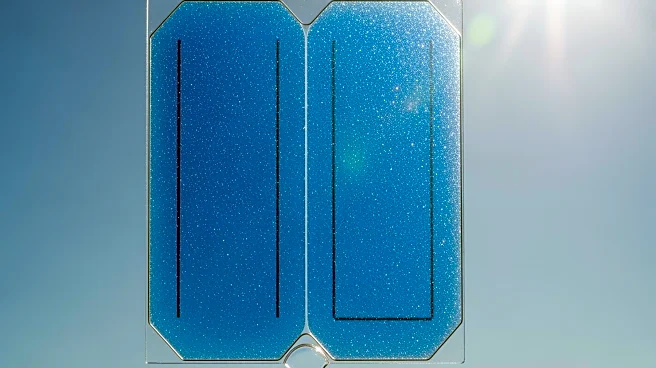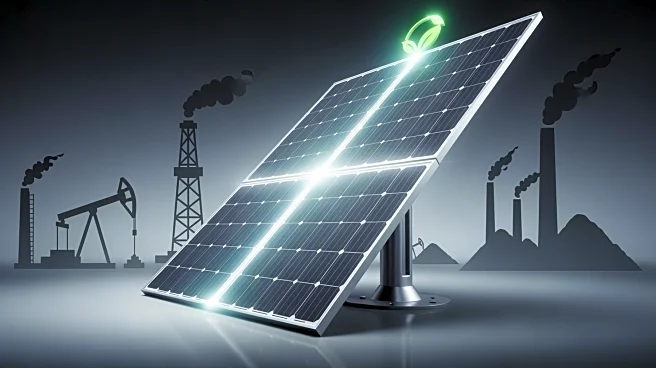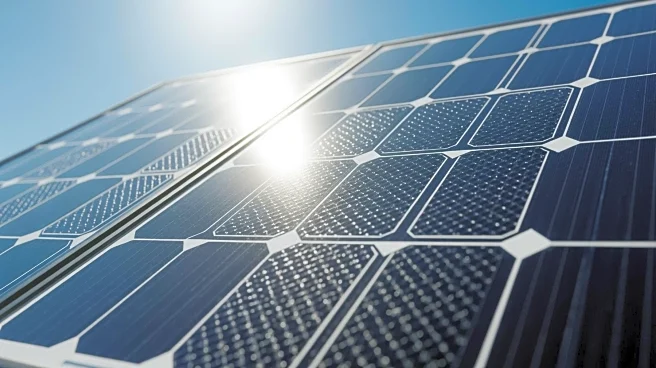What's Happening?
An international team led by Prof. Dr. Antonio Abate from Helmholtz-Zentrum Berlin has developed a fluorinated coating that significantly enhances the stability and efficiency of perovskite solar cells.
The coating, described in a study published in Nature Photonics, forms a compact monomolecular film between the perovskite surface and the upper contact layer, preventing early degradation and increasing efficiency to nearly 27%. This innovation addresses the current stability issues of perovskite solar cells, which have been less stable compared to silicon-based cells. The coating has demonstrated impressive thermal stability and maintained efficiency after 1,200 hours of operation under standard lighting conditions.
Why It's Important?
The development of this fluorinated coating is a significant advancement in solar technology, potentially leading to more durable and efficient solar cells. Perovskite solar cells are known for their cost-effectiveness and high power output, but their instability has been a major drawback. By improving stability and efficiency, this innovation could accelerate the adoption of perovskite solar cells in the renewable energy sector, offering a viable alternative to traditional silicon-based cells. This could have broad implications for energy production, reducing reliance on fossil fuels and supporting global efforts to combat climate change.
What's Next?
The study lays the groundwork for the next generation of perovskite-based optoelectronic devices, which are expected to be both highly efficient and stable. Further research and development could lead to commercial applications, integrating these advanced solar cells into existing energy systems. The potential for tandem cells, combining perovskite and silicon technologies, could further enhance efficiency and broaden the scope of solar energy solutions. Continued innovation in this field may attract investment and interest from the renewable energy industry, driving further advancements and adoption.
Beyond the Headlines
The use of Teflon-like molecules to form an intermediate film represents a novel approach to improving solar cell technology. This method not only enhances efficiency but also addresses structural stability, which is crucial for long-term performance. The success of this coating could inspire similar innovations in other areas of optoelectronics, potentially leading to breakthroughs in related technologies such as light-based computing and quantum devices.











